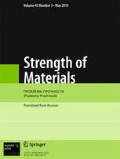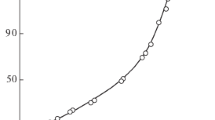The longitudinal fracture of circular shafts loaded in torsion is analytically investigated. It is assumed that a longitudinal crack with a circular crack front is arbitrarily located to the radial direction of the shaft cross section. The shafts are made of nonlinear elastic material, which exhibits continuous inhomogeneity in the radial direction. The material nonlinearity is described by the Ramberg–Osgood stress–strain relation. The longitudinal fracture is studied in terms of the strain energy release rate. The developed analysis is applied to evaluate the longitudinal fracture behavior of a clamped nonlinear elastic inhomogeneous shaft loaded in torsion by a torque applied to a free end of internal crack arm. For the method verification, the strain energy release rate is also assessed by analyzing the energy balance in the clamped shaft. A parametric study is performed to assess the effects of material inhomogeneity, its nonlinearity, and crack orientation to the shaft radial direction on the longitudinal fracture behavior of the clamped shaft.




Similar content being viewed by others
References
V. Rizov, “Analytical study of elastic-plastic longitudinal fracture in a functionally graded beam,” Strength Fract. Complex., 10, No. 1, 11–22 (2017).
V. I. Rizov, “Fracture analysis of functionally graded beams with considering material non-linearity,” Struct. Eng. Mech., 64, No. 4, 487–494 (2017).
M. Koizumi, “The concept of FGM,” Ceram. Trans. Funct. Grad. Mater., 34, 3–10 (1993).
A. Mortensen and S. Suresh, “Functionally graded metals and metal-ceramic composites: Part 1 Processing,” Int. Mater. Rev., 40, No. 6, 239–265 (1995).
A. Neubrand and J. Rödel, “Gradient materials: An overview of a novel concept,” Z. Metallkd., 88, 358–371 (1997).
S. Suresh and A. Mortensen, Fundamentals of Functionally Graded Materials, IOM Communications Ltd, London (1998).
T. Hirai and L. Chen, “Recent and prospective development of functionally graded materials in Japan,” Mater. Sci. Forum, 308–311, 509–514 (1999).
M. M. Gasik, “Functionally graded materials: bulk processing techniques,” Int. J. Mater. Prod. Tec., 39, 20–29 (2010).
M. M. Nemat-Allal, M. H. Ata, M. R. Bayoumi and W. Khair-Eldeen, “Powder metallurgical fabrication and microstructural investigations of aluminum/steel functionally graded material,” Mater. Sci. Appl., 2, 1708–1718 (2011).
S. K. Bohidar, R. Sharma and P. R. Mishra, “Functionally graded materials: A critical review,” Int. J. Res., 1, 289–301 (2014).
V. I. Rizov, “Elastic-plastic fracture of functionally graded circular shafts in torsion,” Adv. Mater. Res., 5, No. 4, 299–318 (2016).
V. Rizov, “Delamination analysis of a layered elastic-plastic beam,” Int. J. Struct. Integr., 8, No. 5, 516–529 (2017).
Author information
Authors and Affiliations
Corresponding author
Additional information
Translated from Problemy Prochnosti, No. 2, pp. 119 – 128, March – April, 2019.
Rights and permissions
About this article
Cite this article
Rizov, V.I. Longitudinal Fracture Analysis of Nonlinear Elastic Circular Shafts Loaded in Torsion. Strength Mater 51, 271–279 (2019). https://doi.org/10.1007/s11223-019-00073-w
Received:
Published:
Issue Date:
DOI: https://doi.org/10.1007/s11223-019-00073-w




